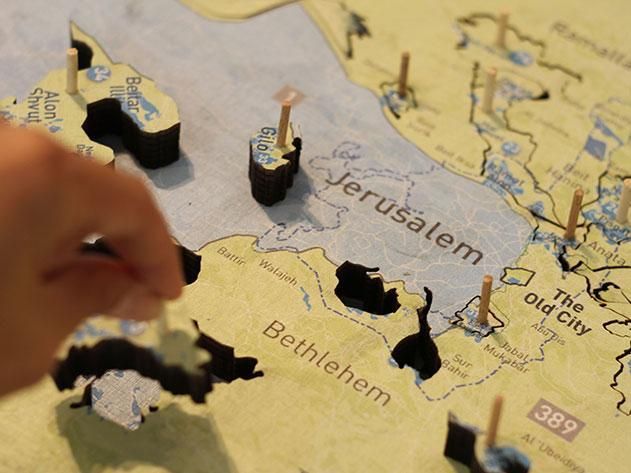AN ARCHITECTURAL BLUEPRINT FOR PEACE
The latest round of US-brokered Israeli-Palestinian peace talks has produced hints of a breakthrough on the most contentious of all issues—the final status of Jerusalem. Is it really possible for the two sides to share the ancient city? What would a division look like?
Pulitzer Center grantee Yochi Dreazen spoke with two young Israeli architects who have drawn up plans for a shared capital. Writing for Smithsonian, Yochi shares their vision:
“It’s 2015, and peace has finally come to the Middle East. Tourists stream to the Old City of Jerusalem from Israel and the new state of Palestine, passing through modern border crossings before entering the walls of the ancient site. Jerusalem has been divided, but creatively: the city’s busiest highway is used to separate the Jewish half of Jerusalem from the Palestinian one, the border between the countries situated unobtrusively along the road’s median.”
An exercise in wishful thinking, or a practical blueprint for peace? “It was a fun story to do,” Yochi tells us. “The two architects had better ideas than any policymaker from either side that I’ve ever met.”
YOUNG MINDS
Western critics often blame Pakistan’s numerous madrassas—Islamic religious schools—for creating a generation of fanatical jihadists. But Pulitzer Center grantee Beenish Ahmed says the blame is misplaced. The real culprit, according to Beenish “is the very radical and militant view of Islam that was inked into the country’s national public school curriculum, and into the hearts and minds of students.”
In a report for PRI’s The World, part of her larger project on the crisis in Pakistan’s educational system, Beenish notes that only about 1.5 percent of Pakistan’s student population attends madrassas, that the overwhelming majority are taught in public schools where the curriculum “was infused with religious undertones by the military dictator Zia Ul-Haq in the 1970s.”
DIAMONDS AND WATER
“The village of Maboane pumps 22.3 million liters of water daily—enough to fill nine Olympic-sized swimming pools—but its 2,000 inhabitants rarely taste a drop of it,” reports Linda Qiu, a University of Chicago student fellow who traveled to Botswana to look at the impact of the diamond industry on village economies.
Virtually all of the water pumped in Maboane goes to support the round-the-clock operations of a huge mining complex about 35 miles away, leaving just a trickle for local residents.
“Maboane’s single standpipe intended for residents is seldom fully functioning, with monthly dry spells and irregular trickling,” Linda writes in a story for The Huffington Post. “Every day, men, women, children hitch donkey carts filled with empty canisters. They stand in line, hoping to collect their weekly supply. The rule of thumb is to stock up with as much as you or your cart can carry; five days can pass between the water flowing and, during the rainy season, hurricane-like conditions last for weeks.”
